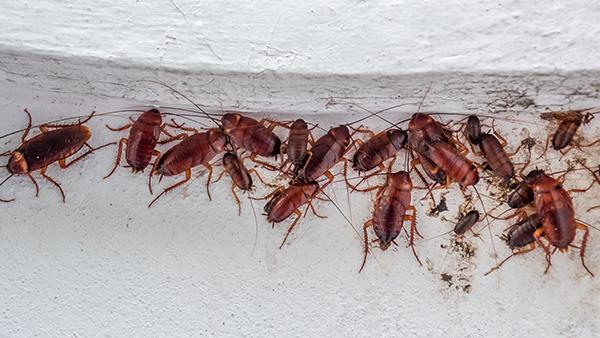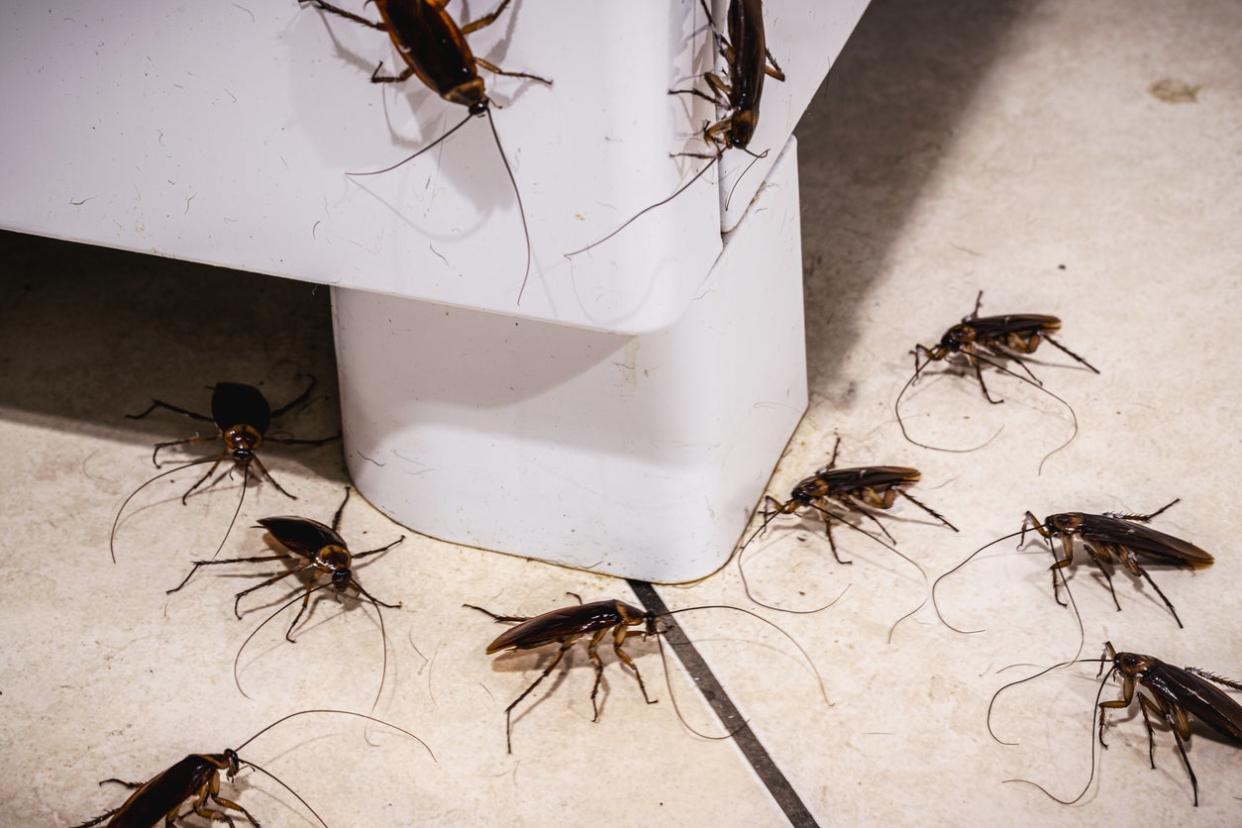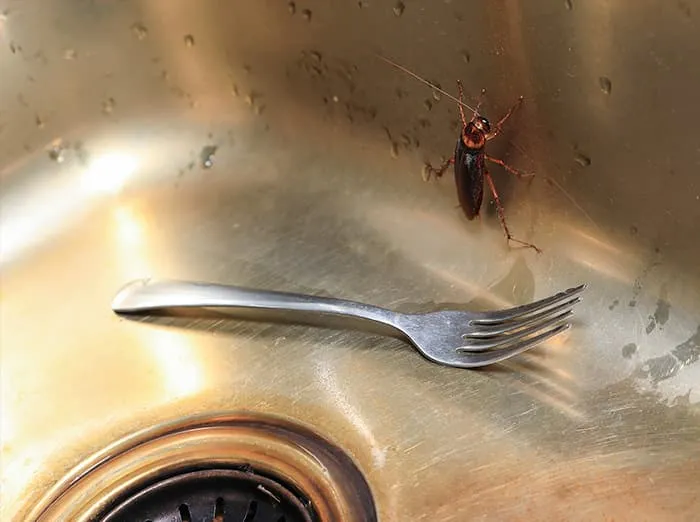Cockroach Treatments in Florida
Exterminator Services for Clearwater, Clearwater Beach, Largo, and Belleair Beach
Florida’s subtropical climate, featuring mild winters, abundant sunshine, and consistent humidity, can unfortunately be a magnet for cockroaches seeking shelter and ample food sources. If these pests find their way into a home, restaurant, or rental property, they can multiply swiftly, posing health hazards and unsettling occupants. For individuals and businesses in Clearwater, Clearwater Beach, Largo, or Belleair Beach, overlooking the first signs of roach activity allows an infestation to expand. This service page explains why roaches thrive in Florida, how to discern a brewing infestation, and why a professional cockroach exterminator remains your best solution for thorough cockroach treatments. Acting fast saves owners from further stress, contamination, and the burden of more complex pest control efforts down the line.
Why Cockroaches Flourish in Florida
- Mild Winters and Year-Round Warmth
In colder parts of the country, sub-freezing temperatures reduce roach activity for months. In Florida, by contrast, winter rarely dips low enough to disrupt roach reproduction. Even short cold snaps fail to hamper heated interiors, meaning roaches remain active indoors no matter the season. As a result, small roach populations can quickly become full-blown infestations if unnoticed. - High Humidity and Moisture
Many roach species rely on constant water sources to survive, like leaky faucets, AC condensation lines, or damp corners under sinks. Florida’s climate, with its regular rainfall and naturally high humidity, ensures even the faintest moisture can sustain a roach colony. If roaches sense standing water or easily accessed damp spots, they linger and reproduce. - Abundant Food Availability
Roaches consume almost any organic material, from crumbs behind the oven to leftover pet kibble or open trash. Restaurants, groceries, or unsealed garbage bins can be appealing. In residential settings, roaches exploit food spills or stored products in cardboard, leaving droppings and bacteria if left undisturbed. A single oversight, like unwashed dishes overnight, provides a buffet they keep coming back for. - Minimal Seasonal Dormancy
In many states, roaches face natural population dips during long, harsh winters. With Florida’s mild weather, roaches never experience those forced slowdowns, letting them continuously forage and reproduce. Without occupant vigilance, a stray roach or two can establish a large brood in just weeks. - Frequent Movement and Tourism
In high-traffic or tourist-friendly locations, roaches can hitch rides in deliveries, cardboard boxes, or personal belongings if someone moves from an infested property. Hotels, rentals, and seasonal residences see occupant turnover that can lead to unintentional roach transport between places. Combating roaches thus demands routine inspection and preventive measures in these areas.

Common Cockroach Species in Florida
- German Cockroach
Small and tan with two distinct stripes behind the head, German roaches are frequent indoor nuisances. They multiply quickly and concentrate around kitchens or bathrooms, thriving where water and food scraps abound. Often discovered in apartments or restaurants, they can be challenging if not addressed properly. - American Cockroach (Palmetto Bug)
Large, reddish-brown roaches up to two inches in length, sometimes called palmetto bugs in Florida. They enjoy warm, damp locations—like sewers, boiler rooms, or subfloor spaces—and might wander into living areas at night. Known for short-distance flight, they can startle residents. - Smokybrown Cockroach
Dark brown or mahogany in color, these roaches prefer moist, wooded environments and can make their way indoors if cracks in doors or windows remain unsealed. They sometimes nest in attics or roof eaves if rotting debris piles up. - Brown-Banded Cockroach
Marked by light cross-bands on their wings, brown-banded roaches need less moisture than German roaches, often dwelling in drier, higher locations—like ceilings, behind wall décor, or inside electronic devices. They can appear anywhere from bedrooms to living rooms, not strictly in kitchens or baths. - Oriental Cockroach
Less typical in Florida’s coastal areas but possible, oriental roaches prefer cooler, damp sites. They might appear near drains, basements, or ground-level spots that remain moist. Slower moving than other species, they generally avoid well-lit spaces.

Signs of a Cockroach Infestation
- Droppings
Roach droppings vary by species but often look like small, dark smears or cylinders. German roach feces can be pepper-like, appearing on countertops, shelves, or in drawers. Larger roaches leave more cylindrical droppings near damp corners. - Strong, Musty Odor
Dense roach populations can create a distinctive oily or musty smell, noticeable in enclosed areas like cupboards, pantries, or crawl spaces. Even minor roach activity can generate an unpleasant aroma if left long enough. - Egg Casings (Oothecae)
Roaches deposit egg capsules containing multiple eggs. These might be stuck to hidden corners, behind appliances, or near water sources. Discovering even one signals active breeding. Some species (like German roaches) may carry egg sacs until hatching, so not all capsules are left behind. - Nocturnal Sightings
Roaches prefer dark, quiet conditions. Spotting them in daylight often means significant overcrowding forced them out in the open. If flicking on lights at night reveals roaches scurrying for cover, that strongly indicates an escalating infestation. - Smear Marks
In humid areas, roaches sometimes leave irregular smear marks on walls or corners they frequently traverse. These streaks can appear as dark lines near baseboards or behind appliances.
Why Swift Cockroach Treatments Are Crucial
- Health and Sanitation
Roaches can carry bacteria (like Salmonella or E. coli), transferring them onto countertops, dishes, or stored foods as they move. Their droppings can exacerbate allergies or trigger asthma in some individuals. Immediate treatment preserves hygienic living or working conditions. - Rapid Reproduction
Cockroaches breed swiftly—particularly German roaches, which can produce multiple egg capsules in a short time. Failing to address a few sightings early can result in a severe infestation that extends across multiple rooms or neighboring units. - Business Reputation
In commercial spots—restaurants, hotels, or stores—cockroach sightings yield negative occupant reviews or social media backlash. Quick, discreet, and thorough elimination helps maintain brand credibility and occupant loyalty. - Daily Stress
Finding droppings in cabinets, stumbling upon roaches at night, or enduring the stench of roach secretions undermines occupant comfort. By eradicating roaches, families regain confidence in their home’s cleanliness, and businesses run without occupant complaints.
Why Professional Cockroach Exterminator Solutions Work
- Accurate Species Identification
Different roach species—German, American, smokybrown—may demand slightly altered tactics. An experienced cockroach exterminator pinpoints which species is present and where they nest. Understanding typical harborage spots ensures efficient coverage. - Comprehensive Eradication
Exterminators place baits, traps, or residual sprays where roaches typically hide—like under sinks, behind stoves, or inside cabinets. They also advise on occupant-driven sanitation improvements that force roaches into contact with these treatments. - Reduced Chemical Use
Over-the-counter roach sprays can scatter the pests, driving them deeper into wall cavities. Professionals apply insect growth regulators or target baits meticulously, limiting occupant exposure to chemicals while maximizing roach contact and colony collapse. - Eliminating Egg Cases
Because roach egg casings protect young until hatching, scheduling a second or third inspection ensures newly hatched roaches also meet lethal conditions. This multi-visit approach verifies no leftover pockets remain to repopulate. - Preventing Future Recurrence
Experts help owners address structural gaps—like sealing cracks or installing door sweeps—and maintain tidier food storage. By cutting roaches off from water or easy meals, the environment becomes far less inviting to new roach arrivals.
Methods Employed for Cockroach Treatments
- Inspection and Mapping
The exterminator first identifies roach runways, nesting sites, or feeding areas, typically behind kitchen appliances, inside cabinets, or around plumbing lines. Documenting these hotspots shapes the treatment plan. - Bait Placement
Gel baits or bait stations, containing slow-acting toxins, lure roaches. After feeding, roaches spread the poison to others in the nest. This approach effectively tackles hidden breeding pockets, especially for German roaches in kitchens or bathrooms. - Residual Insecticides
Applying insecticides along baseboards, crevices, or known roach paths kills roaches traveling these routes. Some products remain active for weeks, covering newly hatched nymphs. Careful usage prevents overexposing occupants. - Dust Application
In wall voids or near drain lines, insecticidal dust lingers, clinging to roaches that brush against it. Because roaches groom themselves, they ingest the dust, leading to colony-wide impacts if used strategically. - Sanitation and Sealing
Occupant-led measures—like storing food in sealed containers, discarding cardboard, wiping surfaces thoroughly—force roaches to rely on exterminator baits or starve. Exterminators may also recommend patching holes where roaches might enter, depriving them of safe harborage.
- Inspection and Mapping

Serving Clearwater, Clearwater Beach, Largo, and Belleair Beach
Clearwater: As a bustling urban center with a vibrant coastal lifestyle, Clearwater sees frequent occupant shifts and commercial traffic, often giving roaches ample chance to find leftover scraps or unsealed cracks. Routine property checks plus occupant diligence keep roach threats minimal.
Clearwater Beach: A popular tourist hub with many short-term rentals, hotels, and constant foot traffic. Roaches can hitch rides in deliveries or with travelers. Swift detection and occupant training—storing trash in sealed bins, wiping countertops, and blocking entry points—limit expansions.
Largo: A blend of older and newer houses or apartments. Older buildings may have cracks or outdated plumbing, luring roaches to moisture and leftover crumbs if occupant routines slip. Coordinated occupant response and professional involvement hamper roach infiltration and breeding.
Belleair Beach: Known for its serene beach community vibe, Belleair Beach sees seasonal occupancy and frequent visitor turnover. Untended yard debris, open garbage, or secondhand furniture might introduce roaches to relaxed, coastal homes if no one notices the early signs.
Why Our Cockroach Solutions Succeed
- Florida-Specific Insight
Our approach addresses roaches’ year-round activity due to the subtropical climate. By integrating occupant cleaning measures with strategic baits or insect growth regulators, we disrupt roach lifecycles comprehensively in southwestern Florida environments. - Precision and Minimal Disruption
We place chemical or mechanical solutions exactly where roaches hide—like behind stoves, in damp cabinets, or under fridges. This approach reduces occupant exposure to pesticides, ensuring only roach-run habitats get treated. - Prevention-Centric Guidance
Alongside extermination, we coach property owners on storing leftovers securely, clearing standing water, or blocking foundation cracks. Such occupant-driven steps deny roaches ongoing resources, ensuring no revival of the colony. - Follow-Up and Assurance
Because roach egg sacs (oothecae) can hatch weeks after initial control, scheduling re-checks or occupant monitoring proves crucial. If new roaches appear, we refine or intensify measures to finalize elimination.
Next Step
Are you finding pepper-like droppings in your pantry, noticing roaches dash across floors at night, or observing musty odors in cabinets? Contact us to learn more or schedule your service. Our cockroach treatments in Clearwater, Clearwater Beach, Largo, and Belleair Beach provide swift, targeted solutions that disrupt roach breeding, remove established colonies, and restore your property’s cleanliness. A qualified exterminator ensures roaches face lethal barriers from strategic baits, while occupant guidance helps seal entry points and maintain tidiness for long-term success.
Maintaining a Roach-Free Property
Once roaches are removed, a few daily habits deter their return:
- Store Food Properly: Use sealed plastic or glass containers for cereals, grains, and other pantry staples. Reseal snack bags promptly and wipe crumbs from countertops.
- Tend Garbage: Keep trash in lidded bins, removing it regularly—especially kitchen waste. Outdoor bins should remain closed, positioned away from building walls if possible.
- Fix Leaks and Dampness: Roaches rely on water. Repair dripping faucets, patch AC condensation leaks, and ensure no standing water accumulates under sinks or behind appliances.
- Vacuum and Mop: Remove crumbs or spills daily, especially under refrigerators or in corners. Minimizing leftover scraps deprives roaches of fuel.
- Seal Cracks: Close gaps around windows, doors, and foundation lines to thwart roach entry from outdoors. Weatherstripping, caulking, and door sweeps hamper insect infiltration.
Together, occupant vigilance and robust cockroach treatments thwart repeated infestations, letting property owners in southwestern Florida savor the region’s scenic coastline without the stress of hidden pests rummaging after nightfall. By quickly addressing signs of roaches, systematically applying effective solutions, and maintaining cleanliness, you sustain a roach-free environment for family, tenants, or customers alike.
